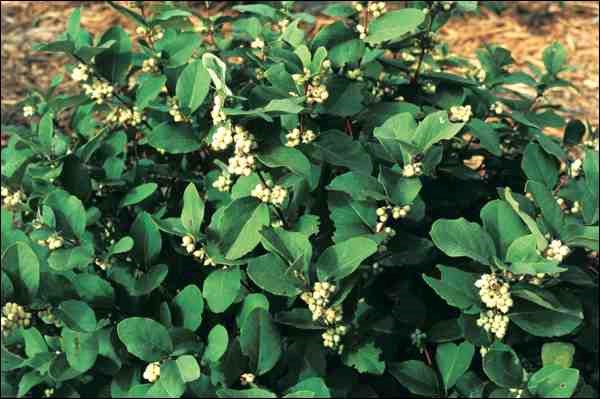Dry shade - under a dense tree canopy, between houses, under the eaves - is many a gardener's bane and embarrassment. Grass won't survive, nor will most perennials or shrubs. But there are some drought and shade tolerant groundcover plants that once established can be used to 'solve' this problem area. Establishing plants requires a bit of extra care in their first year: amend planting holes with organic matter (e.g. compost), apply a 10 centimetres mulch layer and water deeply regularly.
Here are a few dry shade groundcovers that will cover your shameful areas:
Western Canada violet (Viola canadensis), native to our Prairie woodlands, is a hardy, enduring and attractive groundcover for dry shade. Fragrant white flowers with a yellow eye and distinct purple-pink veins appear in late spring and early summer above heart-shaped foliage.
Bigroot perennial geranium (Geranium macrorrhizum) is excellent for dry shaded areas. As the Latin name suggests, it grows from big rootstocks to form a dense cover of intensely fragrant, light green leaves about 30 centimetres high. The flowers are 2.5 centimetres in diameter and appear in early summer. They vary in colour from near white to deep magenta. The leaves turn an attractive orange in the fall. The lighter the shade, the greater the flowering, but the foliage alone earns it a place as a groundcover.
Pygmy caragana (Caragana pygmaea) is as well-adapted to shade as the better-known hedge caragana (C. arborescens) found throughout our prairie farmland. Its grey-green foliage is fine-textured, each pinnately compound leaf consisting of four small leaflets. Only 75 centimetres (30 in.) in both height and spread, it is globe-shaped and works well as a mass understory under trees. It has attractive yellow flowers but also spines (which makes it an excellent barrier planting as well.)
'Sem' false spirea (Sorbaria sorbifolia 'Sem') is a fairly recent addition to our arsenal of ground covers and survives in deep shade with little water once established. It emerges in the spring with startling golden-orange foliage mingled with lime green, brightening even the gloomiest shade. Pinnately compound leaves and white feathery flowers in late summer add to its landscape value. About one metre in height, it eventually forms a continuous understory through suckering. As attractive as the foliage appears in a nursery pot in spring, don't be 'suckered' into thinking that it will be well behaved in a shrub border. It will be out of bounds within a season. Use it as intended: as a ground cover.
Western snowberry (Symphoricarpos occidentaliuss) was well used by Deiter Martin as an understory in partial shade on the University of Saskatchewan campus grounds. Native to the prairies, it spreads by suckering. Pink, bell-shaped flowers in spring are followed by clusters of non-edible berries that ripen to an attractive white but may later turn brown. The oval leaves are a blue-green.
Creeping forget-me-not (Omphalodes verna alba) is a low (20 centimetres/8 in.) perennial distinguished by its bright green, lance-shaped foliage and the small, white flowers that appear in spring. It spreads by stolons and thrives in dry shade.
Virginia creeper (Parthenoccissus quinquefolia) is most admired for its brilliant scarlet fall foliage. Keep in mind that this feature will be subdued in the shade, but the large palmately compound leaves, each with five toothed leaflets remain attractive. Small blue berries resembling grapes follow the inconspicuous flowers. It is particularly useful to cover slopes.
- Williams is the author of the newly revised Creating the Prairie Xeriscape. Her latest book, The Saskatoon Forestry Farm Park & Zoo: A photographic History will be released shortly. This column is provided courtesy of the Saskatchewan Perennial Society (www.saskperennial.ca; [email protected]). Check out our Calendar for upcoming horticulture events: garden tour on June 15, Labour & Learn opportunities throughout the summer.
Have a gardening question? Contact GardenLine, 306-966-5865 or [email protected]




